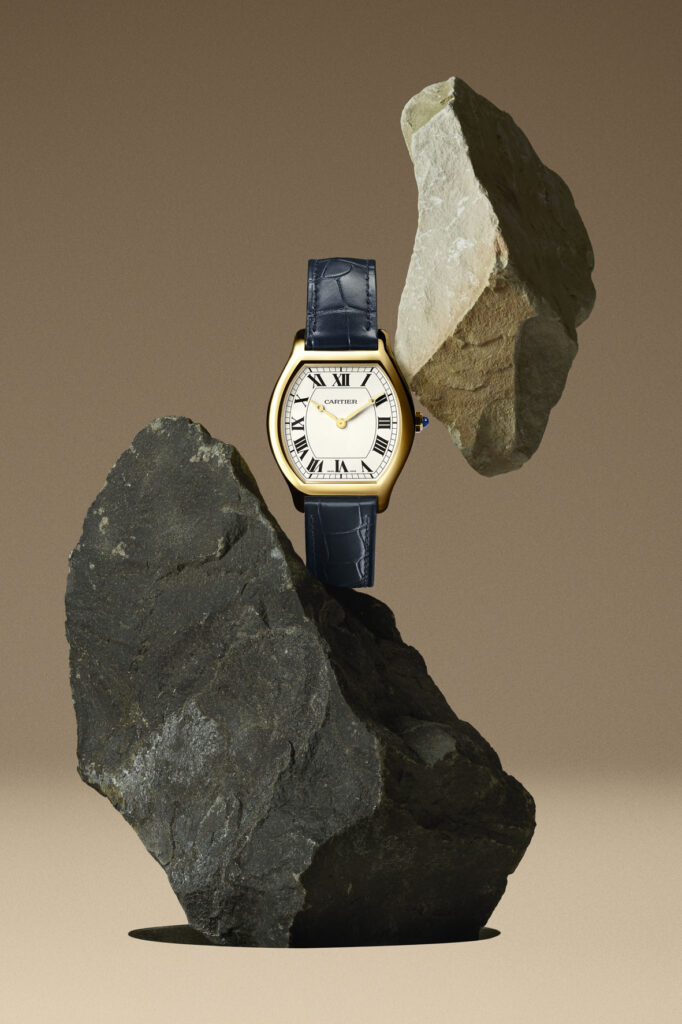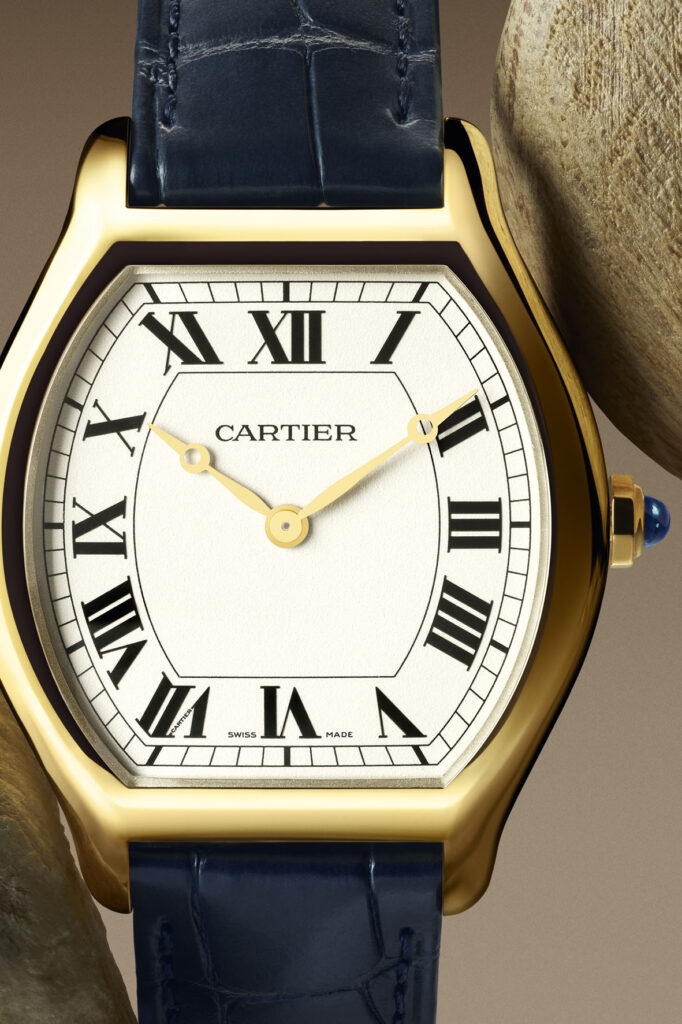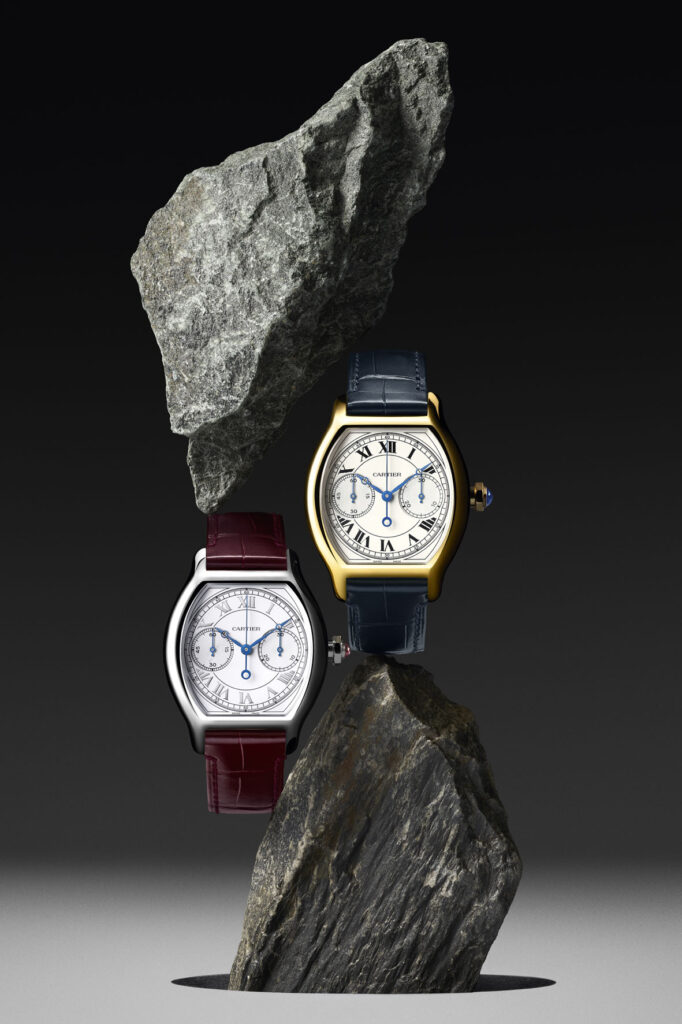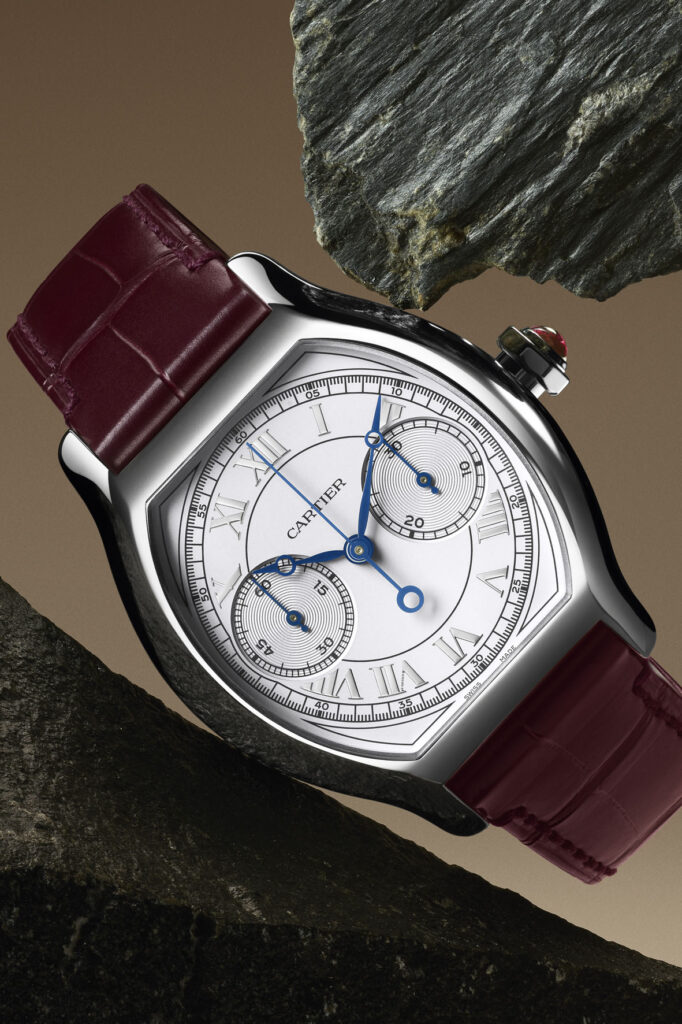Cartier Privé Tortue and the shape of beauty
9 April 2024The Cartier Tortue may not be as famous as the Tank or the Santos, but it certainly is just as historically important. This is why this year, the Parisian Maison is presenting it at Watches & Wonders 2024 in an incredible array of new and precious references. A collection update that puts the Tortue back in the spotlight, loyal to the tradition established by the rare models that were presented in past years – from the Crash to the Tank Cintrée to the Tonneau – and revisited by Cartier who made sure that technique serves aesthetics.
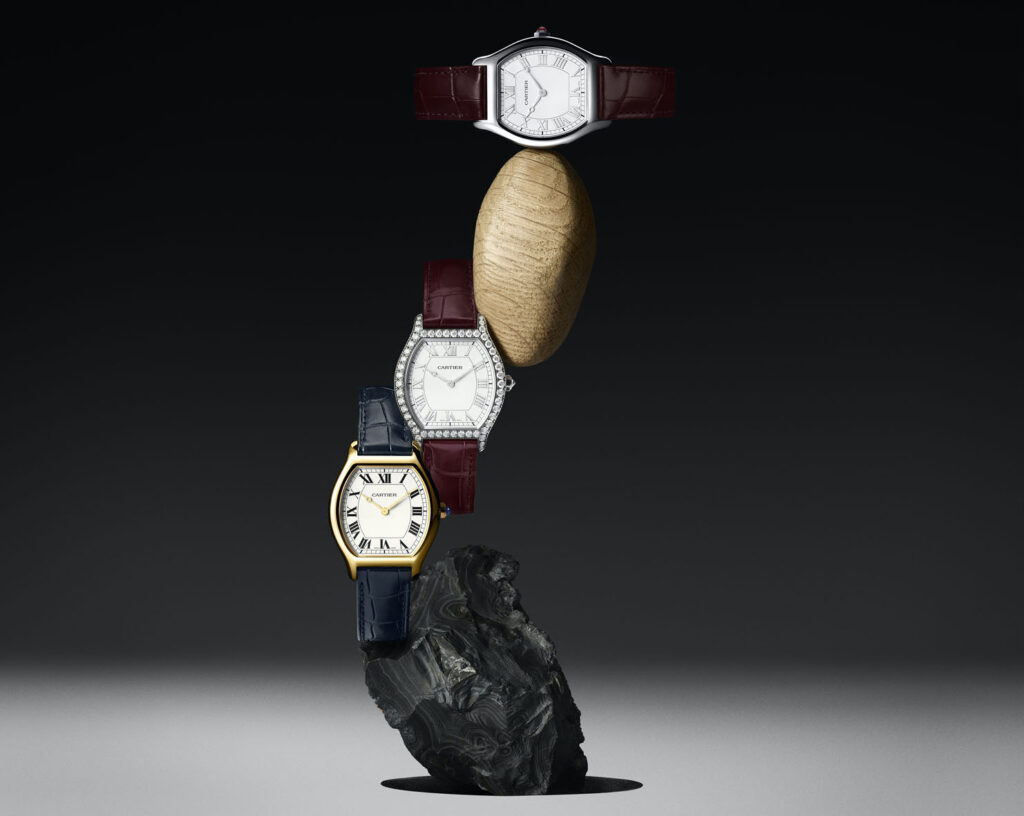
THE BIRTH OF THE CARTIER TORTUE
The sensual shape of the first Tortue case was created in 1912 and was, in fact, Cartier’s third watch model after the Santos Dumont and the Tonneau. Although the Maison did not celebrate the Tortue’s 100th birthday with a specific anniversary model in 2012, it did introduce some new models in 2012 and 2013.
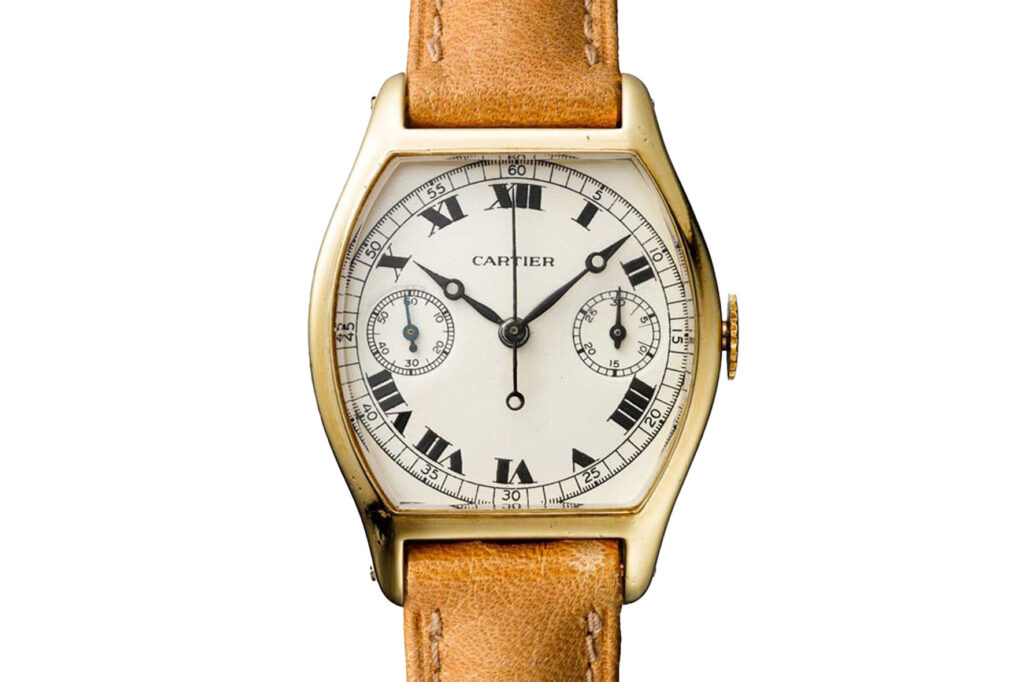
From the outset, the Tortue has been a successful time-only watch, living happily alongside the Santos Dumont and the more famous Tank. A success experienced in its own way, because it had always been a watch for connoisseurs. The Tortue’s importance then increased when Cartier decided to add some complications to the time-only and launched a minute repeater and a monopusher chronograph in 1928… remember this last detail…
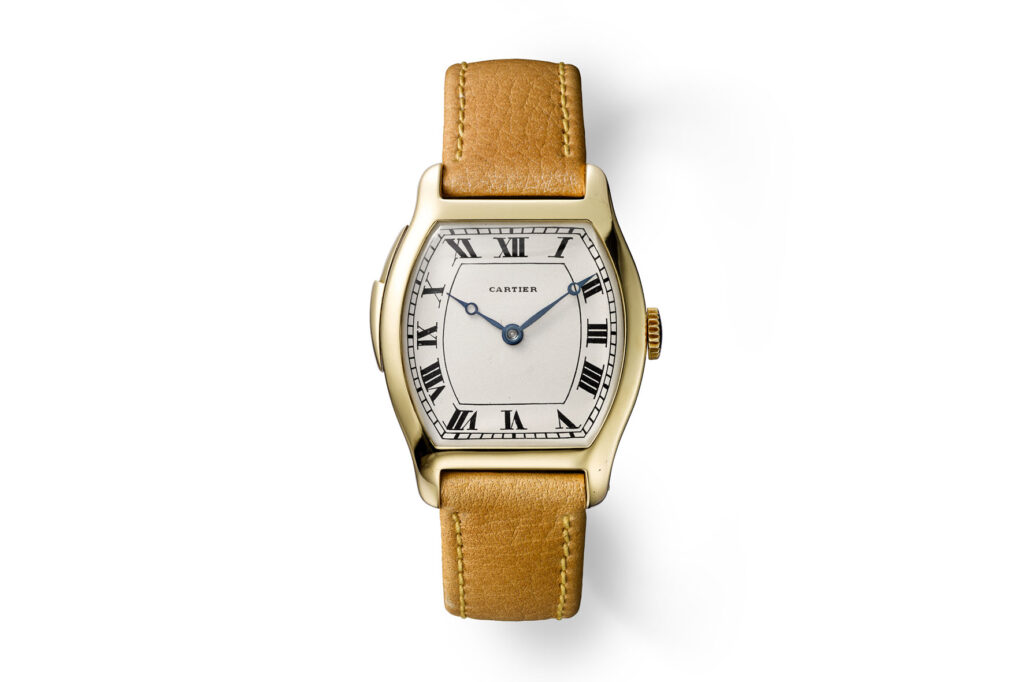
At that time, the calibres were supplied by the European Watch & Clock Company (EWC), which obtained the movements from LeCoultre and equipped Cartier’s various models such as the Tortue, the Tortue Monopusher, the Tank Cintrée, the Tank à Guichets and probably others. In the 1930s, Cartier also purchased more complicated movements from the European Watch & Clock Company.
THE RE-LAUNCH OF THE MONOPUSHER CHRONOGRAPH
Not many Tortue watches with complications were produced, and when a vintage Tortue Monopusher or Minute Repeater occasionally appeared at auctions, they were sold at staggering prices. This is why, when Cartier presented the Collection Privée Cartier Paris in 1998, collectors were surprised to see a re-edition of the famous Tortue Mononopusher, in yellow gold and with a hand-wound mechanical calibre, the 045MC.
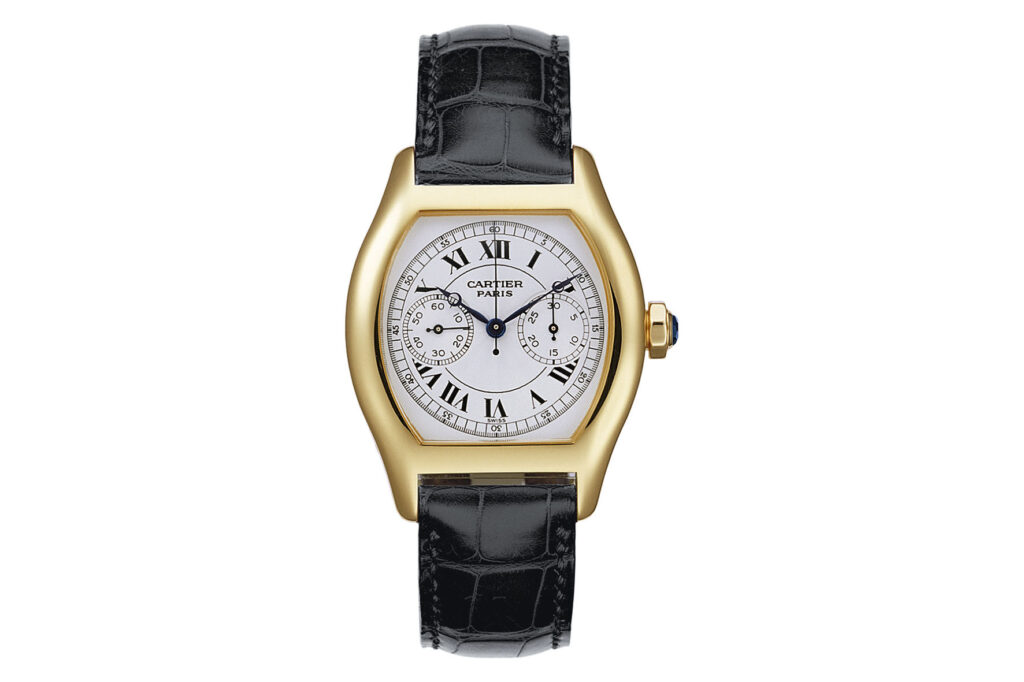
The 045MC movement was a THA ebauche – where THA was a company founded by Vianney Halter, François-Paul Journe and Denis Flageollet. Three contemporary watchmaking giants who contributed to the birth of that calibre, which featured a special clutch system with a swivel pin. This means that the transmission of the movement of the second wheel of the base movement to the chronograph’s central wheel is effected through a double swivel pin. The advantage of this system lies in the fact that it suppresses the skip of the hand at the beginning of a translation movement, which is found with the mechanisms of chronographs with a lateral clutch.
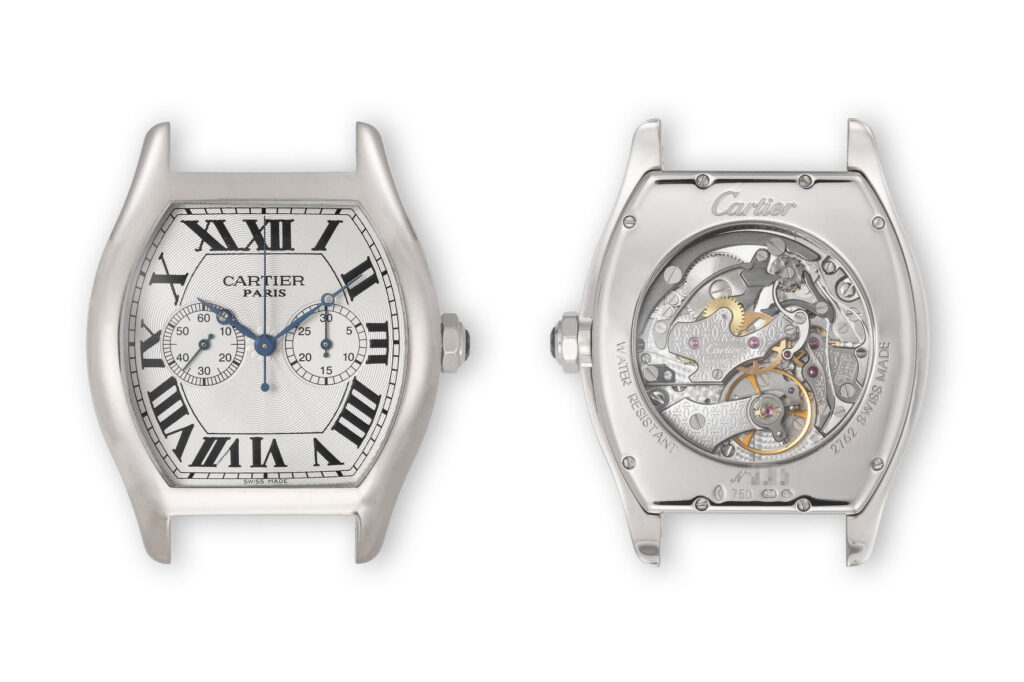
That Tortue was a little larger and thicker than the original model. A choice made by Cartier not so much to make it look more manly as to adapt it to the new movement it housed. With a case measuring 45×35 mm, it still remained not quite a large watch, at least not by the standards of the time.
CARTIER TORTUE AND CARTIER PRIVÉ
Like an underground river, the Tortue thus periodically returns to appear in Cartier’s collections. This year, as we wrote above, the stage on which it is being showcased is Watches & Wonders 2024. Here, Cartier brings five Tortue references, permanently included in the Cartier Privé collection: three time-only and, again, two monopusher chronographs. This is why we wrote above that you should remember this complication.
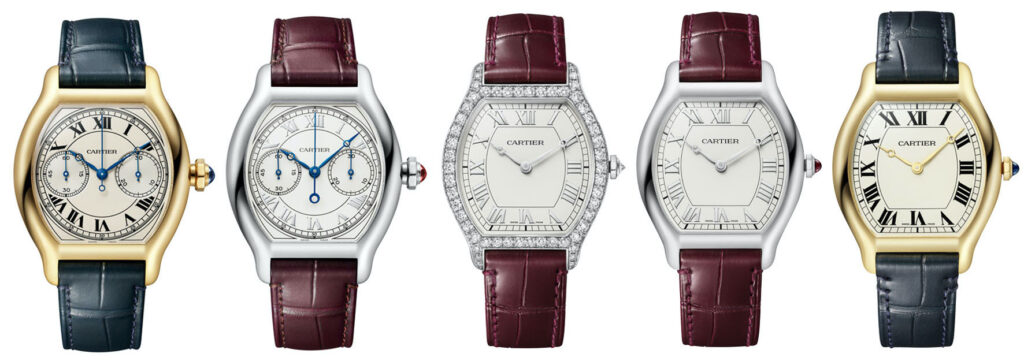
The mention of Cartier Privé is not idle: it is in fact an exclusive creation offering a contemporary reinterpretation of one of the most prestigious classics in the Maison’s repertoire. This year’s Tortue represents the eighth edition of the Maison’s great accomplishment with Cartier Privé. To tell that story, let us start with the time-only references.
THE PRECIOUSNESS OF THE CASES
As far as aesthetics areconcerned, those who know the Tortue will recognise the territory into which they are moving. We are talking about a continuous dialogue between curves and taut lines, lugs elongated along the strap, and a refined profile. As always, the dial is a hymn to simplicity and elegance: pomme handsand chemin de fer minute track around the perimeter of the hour markers, no date, Roman numeral hour markers, hour and minute hands only, no seconds.
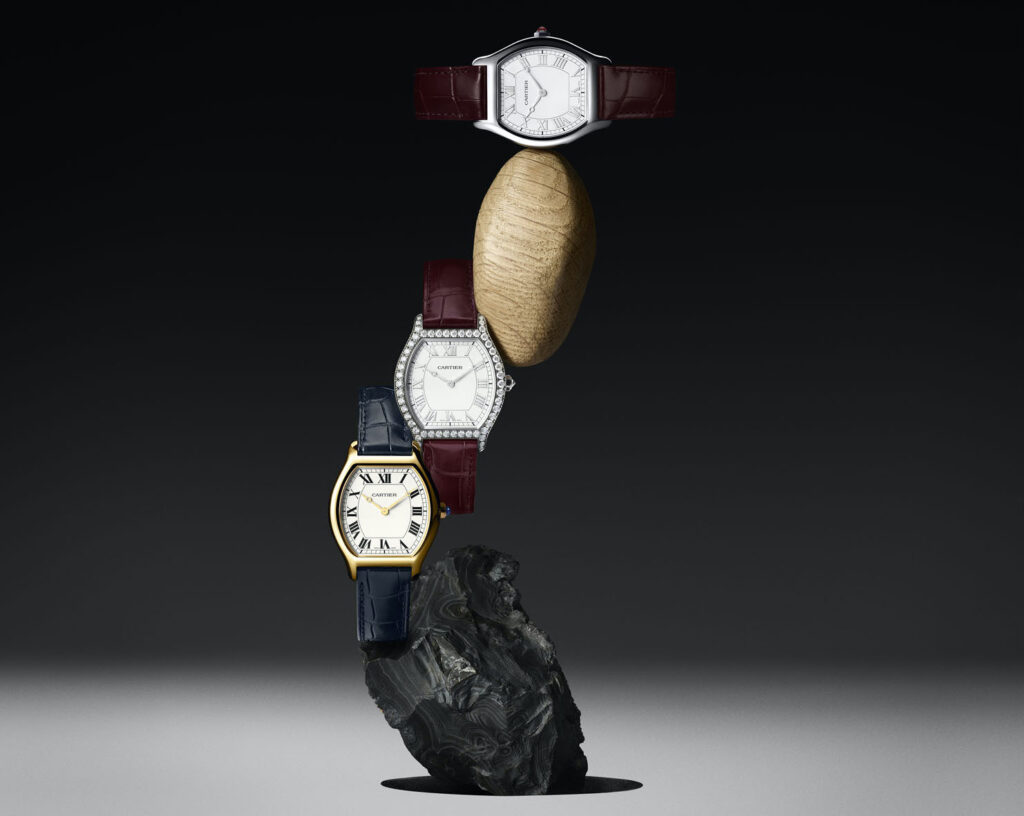
Cartier has chosen to use only precious metals for the cases in these 2024 editions: yellow gold or platinum. With the latter, the Maison has also created an unprecedented piece for the Cartier Privé collection, combining it with the brilliant-cut diamonds adorning the case, for a total of 2.01 carats. Another brilliant-cut diamond is found on the winding crown, and 25 stones adorn the pin buckle closing the red alligator strap.
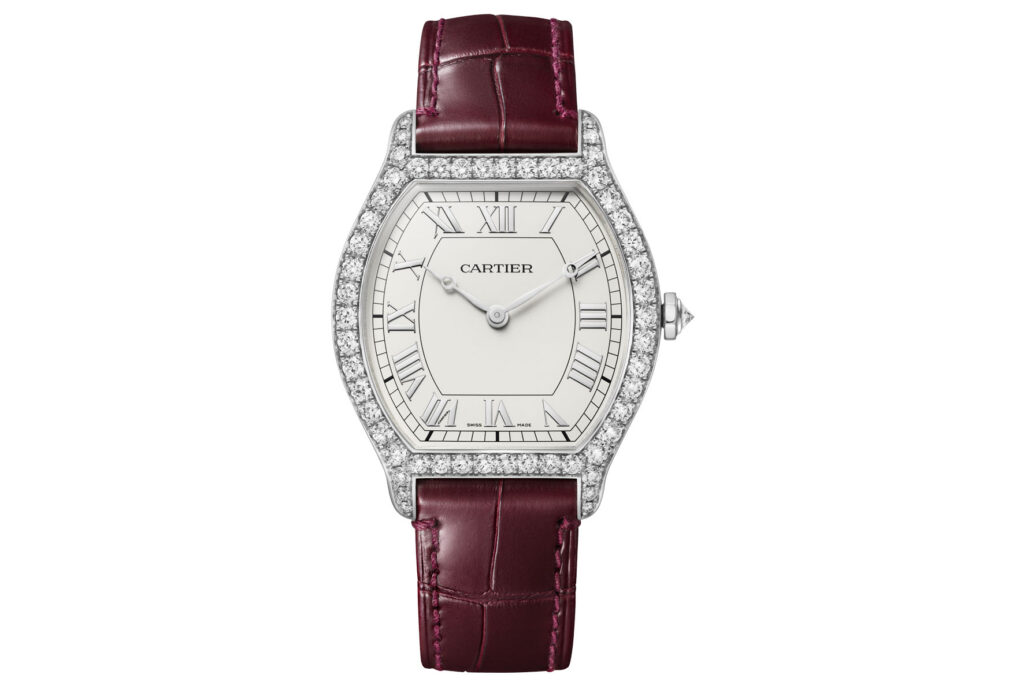
A version in platinum without stones is also available. On both references, the rhodium-plated Roman numerals stand out, emerging from the silvered opaline dial without contrasting: it is one of the magic tricks created to answer the vocation for legibility that has always characterised the Cartier Tortue. Even on the reference with a platinum case and without stones, the strap is red, alligator, and its colour is echoed by the cabochon ruby set on the crown. The platinum version with pavé is made in 50 pieces, the one without stones in 200.
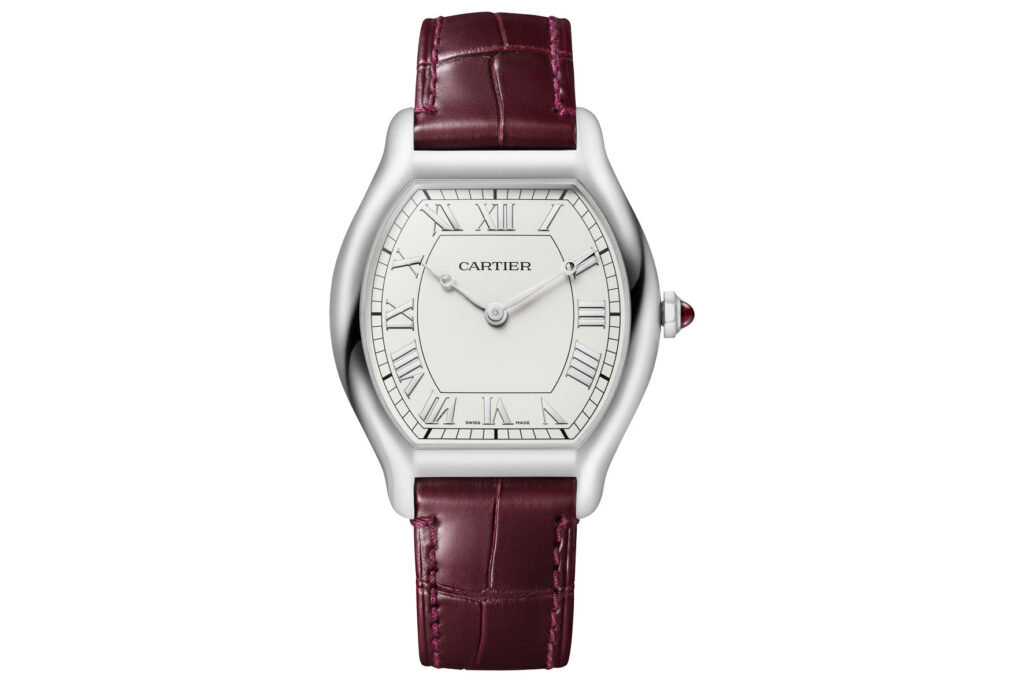
Let us not forget the yellow gold model, one of Cartier’s favourite metals in the production of its haute horlogerie pieces. Only one model of this reference has been created, perfectly in line with the aesthetic canons of the collection. Indeed, the case frames a dial with a slightly grained golden finish, on which the black Roman numeral hour markers and the chemin de fer minute track stand out in a unique way. Following Cartier’s tradition, a stone also appears on its winding crown: it is a cabochon sapphire, its blue echoing that of the blue alligator strap with pin buckle. This reference too is produced in 200 pieces.
The dimensions of the cases are thesame for the different metals and are devoted to elegant wearability: 41.4 mm x 32.9 mm, with a reduced thickness of 7.2 mm. This is made possible by the presence inside the case of the hand-wound mechanical Manufacture 430 MC movement, one of the finest used by Cartier.
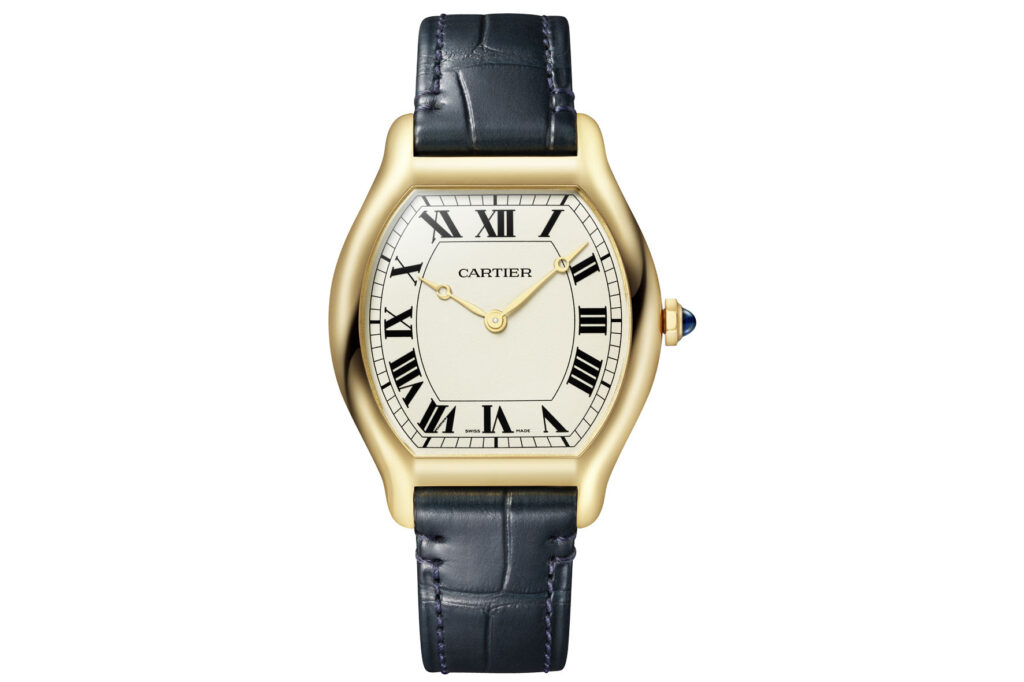
This calibre equips certain references currently in the collection: the Tortue Extra Thin, the Ballon Bleu and the Santos Dumont. It was developed on a Piaget base, and more exactly on the architecture of the Piaget 430P. Like the latter, it only has an hour and minute display, operates at 21,600 vibrations per hour and has a limited power reserve of between 36 and 43 hours. Its thickness of only 2.1 mm makes it a prodigy, befitting an exclusive piece such as the Cartier Tortue.
CARTIER TORTUE MONOPUSHER CHRONOGRAPH
The return of the Tortue only time at this edition of Watches & Wonders already made us rather excited. The fact that Cartier is also presenting two new versions of the monopusher chronograph is a wonderful surprise. Because this is the return of one of the most elegant, beloved and sought-after references in the Maison’s collections, thanks to the fact that it houses a classic complication reminiscent of the great watchmaking art of the early 20th century.

The special feature of a Monopusher movement is of course the fact that all the chronograph functions are operated by a single pusher, normally housed inside the winding crown. In this way, the crown itself becomes a sort of ‘brain‘ for the watch, the command bridge through which all its functions are operated and adjusted. The monopusher chronograph is not only a clever invention, but it also gives the watch in its whole a less busy, less sporty and more elegant look. Especially in a collection like the Cartier Privé and for a reference like the Cartier Tortue.
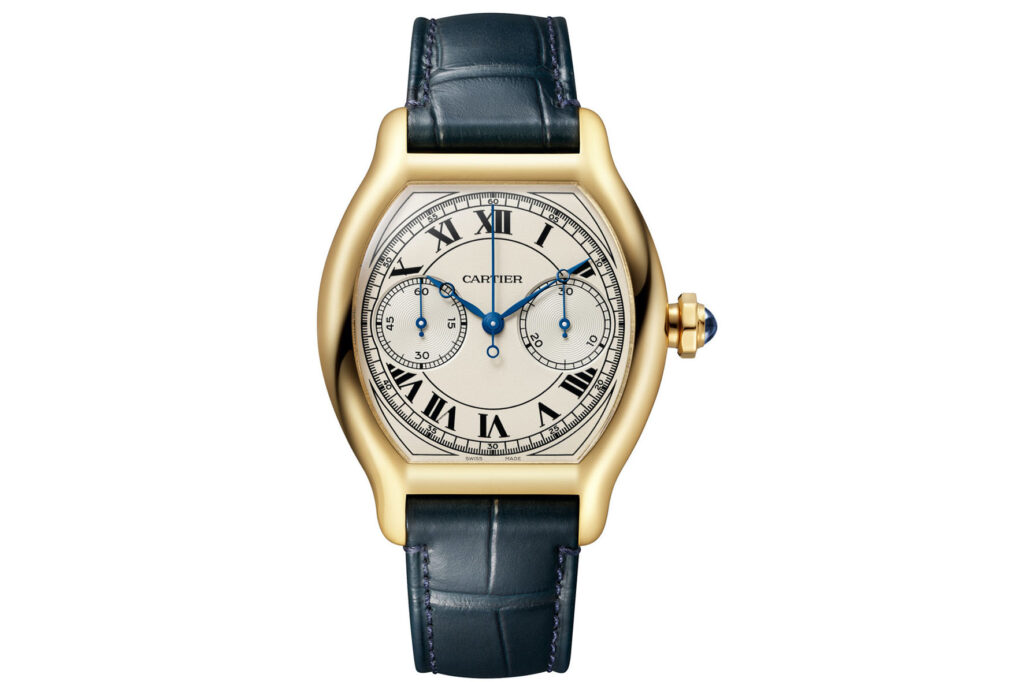
We will not retrace the story of the Collection Privée Cartier Paris chronograph presented in 1998 with this complication, as we have already written about it. We need only remind you that some of the details that characterised it are also featured on this new Tortue. We are talking about the blued steel pomme hands, the seconds hand with its skeleton counterweight, and the triangular motifs at the four corners of the dial.
On the monopusher chronograph, Cartier has once again chosen platinum and yellow gold forthe cases, using the same aesthetic codes as on the time-only model: cabochon sapphire and ruby on the crowns, echoing the blue and red alligator straps. As is understandable, since it is a chronograph, the dimensions of the cases are more generous than those of the time-only version: 43.7 mm in diameter by 34.8 mm, with a thickness of 10.2 mm – which is not remarkable at all considering the complication it holds.
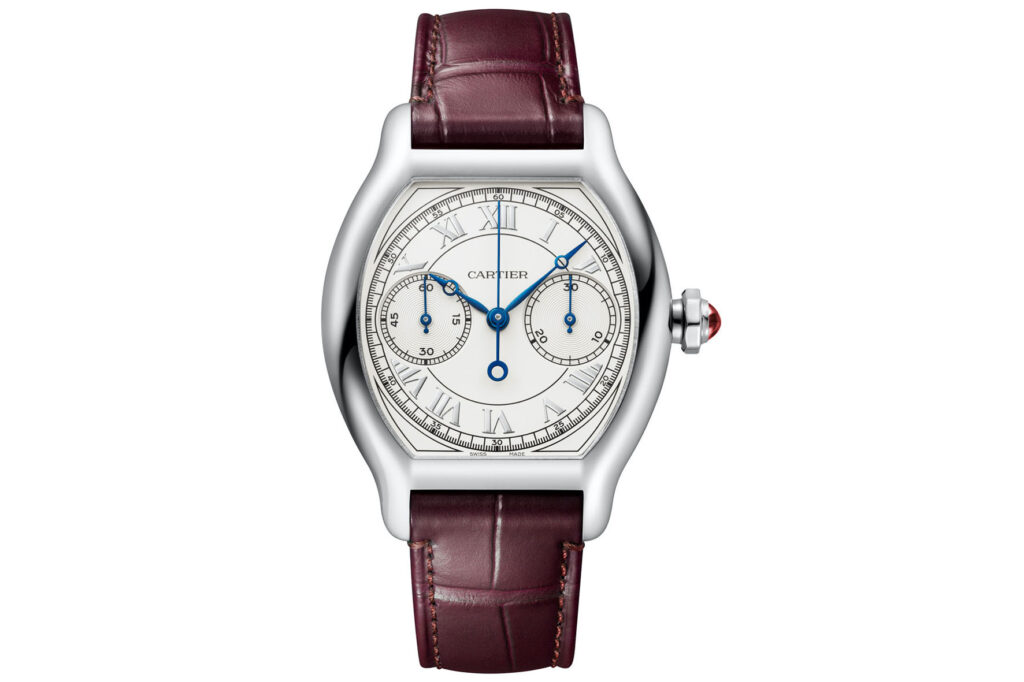
While rhodium-plated Roman hour markers are used on the platinum version, and black ones on the gold version, the beauty of the chronograph dials lies in the optimal balance ofthe chemin de fer minute track and the counters placed at 3 and 9 o’clock. The hands of the latter are blued like those of the hours and minutes, and their legibility is enhanced by the concentric patterning that characterises the two counters, detaching them sharply from the dial’s opaline surface.
For these two versions of the Cartier Tortue monopusher chronograph, too, the path of exclusivity has beenchosen: both the gold and platinum references are in fact produced in only 200 pieces. We bet that many, many people will be left high and dry.
THE MOVEMENT’S MANUFACTURE
The watch is brought to life by a new calibre: the mechanical hand-wound 1928 MC movement. Naturally, the chronograph is driven by a column wheel, the most precise and reliable technical solution. The technical and mechanical lessons of the 045MC movement that put the 1998 reference into motion are not forgotten but modernised: such a calibre with such beautiful architecture proved it was worth showing off.
Unlike the time-only Tortue, in fact, the monopusher chronograph has an open back that allows a view of the 1928 MC calibre so that the combination of savoir-faire and virtuosity characterising it can be admired. Beyond the technique, what stands out is the attention to detail and aesthetics. Côtes-de-Genève motifs emphasise the sinuous shapes of the bridges, while the bascules, springs and bridges are hand-finished in anglage, one of the haute horlogerie processes requiring the most meticulousness. The cerclage-finished wheels and barrels complete the calibre’s refined craftsmanship.
Cartier defines its new Tortue monopusher chronograph as a ‘small theatre for an elegant complication that can be operated with a single gesture’. To be able to access the show staged in that theatre, the price is inline with the quality of the watch: €65,000 for the platinum version, €56,500 for the yellow gold reference. As for the three time-only watches, we are talking about €65,000 for the one in platinum and diamonds, which becomes €39,200 for the version without stones, and €34,100 for the yellow gold reference.
True to the brand’s tradition of excellence, the new Cartier Tortue is one of the few watches before which, in this Watches & Wonders 2024, we have taken our hats off. Despite its classicism, Cartier is one of those brands that never ceases to surprise us.
By Davide Passoni

